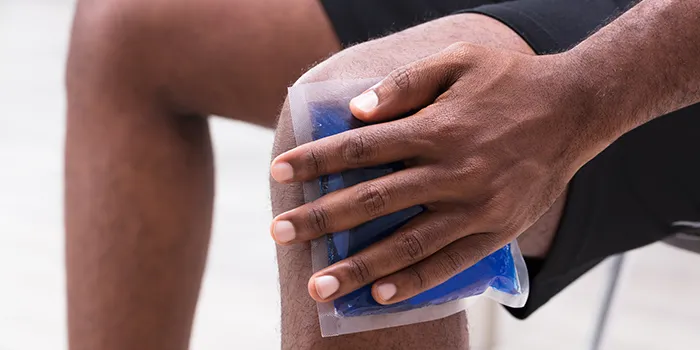Easy bruising is one of the most common and frequent symptoms of hemophilia. After all, a bruise occurs when an injury causes small blood vessels under your skin to bleed, and having hemophilia means your blood doesn’t clot properly, so even small bumps can turn into large bruises.
Fortunately, there are methods to limit the extent of the bruise. Use these tips to manage bruises, and learn how to identify when bruises are a sign of something more serious that requires medical attention and needs clotting factor treatment. For severe bruises, contact your hemophilia treatment center (HTC) so you can get proper medical care.
Use the R.I.C.E. Method for Hemophilia Bruising
This tried-and-true strategy stands for “rest, ice, compression and elevation,” and it’s used to treat sprains, strains and bruises by slowing bleeding and reducing pain. The R.I.C.E. method is effective for minor bruises and should be started as soon as possible.
Rest: After a bleed occurs, and while your body is healing, the affected area should be rested and protected. Depending on where the bruise is, refrain from doing certain activities such as lifting heavy objects if your arm is bruised or walking around if the bleeding is in your legs.
If you’re in pain, you may be tempted to massage the bruised area, but doing so could cause more blood vessels to break, making the bruise bigger.
Ice: Put an ice pack on your bruise; the cold temperature will slow blood flow in that area and reduce the amount of blood that leaks out of your vessels. Experts recommend applying ice for 15 to 20 minutes every two to three hours during the first 24 to 48 hours after your injury. Make sure to wrap the ice in a towel, as putting ice directly on your skin can cause ice burn or even frostbite.
Compression: Put pressure on the injured area using an elastic medical band to slow bleeding and reduce swelling caused by the bruise. Wrap the elastic band so that it’s snug but not too tight. If the injured area changes color and becomes cool or numb, then you’ve likely wrapped the bandage too tight. In this case, take the band off and re-wrap so it’s not as tight.
Elevation: Raise your injured limb so that it’s higher than your heart. This keeps blood from pooling easily, which makes bruises larger.
Signs of Severe Bruising
Severe bruises require medical attention and possibly clotting factor treatment. But how can you tell the difference between a regular bruise that can be treated with the R.I.C.E. method and bruises that signal severe bleeding? There are signs, including:
- If the bruise is accompanied by swelling and extreme pain
- If the bruise doesn’t go away after two weeks
- If pain remains days after injury
- If the bleed limits the movement and function of nearby joints
If you’re unsure about the severity of a bruise, it’s always best to contact your HTC.

